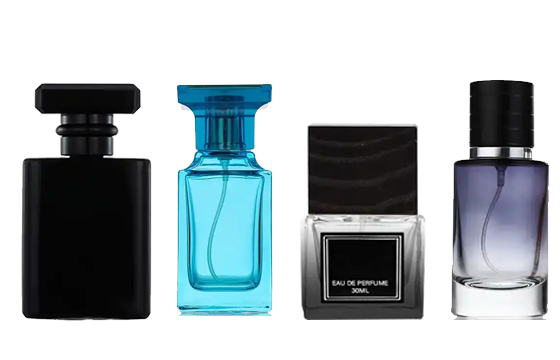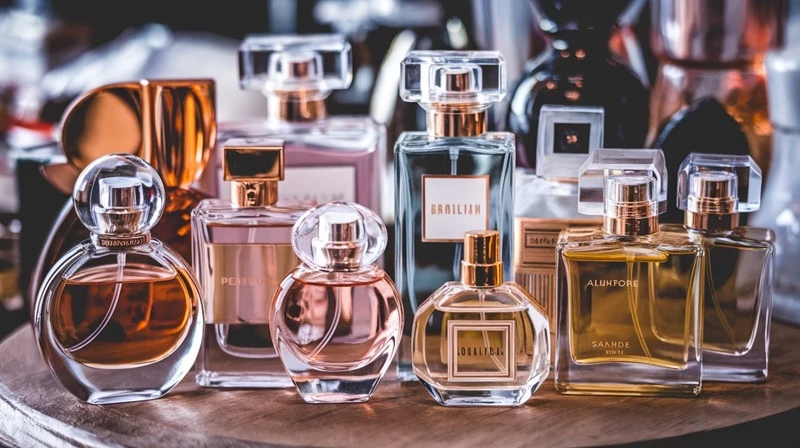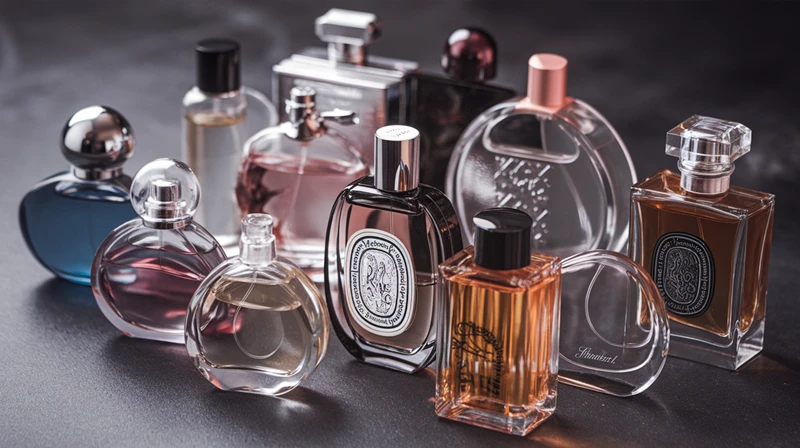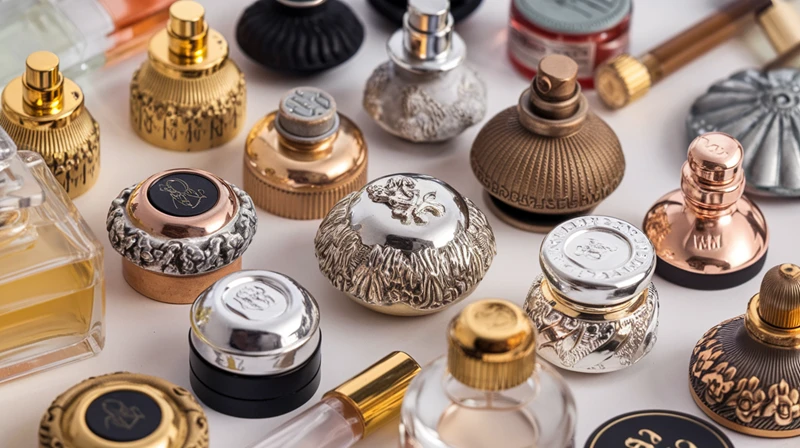6 different types of Perfume: How to choose
Perfume has a long history. Many people like it because it represents a person’s personality and pursuits. But there are so many perfumes in the market and many false temptations.
In response to such a problem, I wrote an article that helps you make some identifications. I am listing 6 types of perfume following:
- Eau de Parfum (EDP)
- Eau de Toilette (EDT)
- Eau de Cologne (EDC)
- Eau Fraiche
- Solid Perfume
- Perfume Oils
Eau de Parfum (EDP)
Eau de Parfum (EDP) is a type of perfume that is known for its relatively high concentration of fragrance oils.
Eau de Parfum typically contains between 15% to 20% fragrance oils, which is higher than Eau de Toilette (EDT) but less than Parfum (also known as Extrait de Parfum).
It has some features:
1. Due to its higher concentration of fragrance oils, EDP generally lasts longer on the skin compared to lighter fragrances like Eau de Toilette or Eau de Cologne.
It can typically last for about four to five hours, though this can vary depending on the specific formula and how it interacts with an individual’s skin chemistry.
2. Eau de Parfum is versatile and can be worn on both special occasions and for everyday use.
3. Eau de Parfum is often presented in spray bottles, allowing for easy application. It is generally more expensive than lighter concentrations like Eau de Toilette, reflecting the higher percentage of fragrance oils.
4. Eau de Parfum is available in a wide range of scents, from floral and fruity to woody and spicy. The choice of scent depends on personal preference and the occasion.
5. It’s suitable for those who want a perfume that is noticeable and long-lasting but not as intense as pure Parfum.
Eau de Toilette (EDT)
Lighter than Eau de Parfum, Eau de Toilette contains about 5-15% fragrance oils. It’s a popular choice for daywear due to its lighter, more subtle scent.
Here are its key characteristics:
- Concentration of Fragrance Oils: EDT typically contains a fragrance oil concentration of about 5-15%. This is lower than Eau de Parfum but higher than Eau de Cologne. The lower concentration makes EDT lighter and less intense.
- Longevity: Due to its lower concentration, Eau de Toilette generally does not last as long as Eau de Parfum. On average, it can last for about 3 to 4 hours. The actual duration can vary depending on the specific fragrance composition and the wearer’s skin chemistry.
- Sillage: EDT has a lighter sillage compared to EDP. This means its fragrance is more subtle and less likely to be overpowering, making it a good choice for environments where a strong fragrance might be intrusive.
- Usage: Eau de Toilette is a popular choice for everyday wear, especially in warmer climates or during the daytime. Its lighter scent profile makes it suitable for office environments, casual outings, and other settings where a heavy fragrance might be too much.
- Variety of Scents: Like EDPs, Eau de Toilettes are available in a wide range of scents. They often feature fresher, brighter notes that are appealing for daytime wear.
- Packaging and Pricing: EDTs are often less expensive than EDPs due to their lower concentration of fragrance oils. They usually come in spray bottles, similar to EDPs, allowing for easy application.
- Versatility: EDTs are versatile and can be worn by people of all ages and genders. They are often seen as a good starting point for those new to wearing fragrances due to their subtlety.
Eau de Cologne (EDC)
Eau de Cologne (EDC) is a type of fragrance that is lighter in concentration than both Eau de Parfum (EDP) and Eau de Toilette (EDT). The term “Cologne” originates from the city of Cologne, Germany, where a specific formula called “Eau de Cologne” was first created. This classic formulation has influenced many of the colognes available today.
Here are its key characteristics:
- Concentration of Fragrance Oils: Eau de Cologne typically contains a lower concentration of fragrance oils, usually around 2-4%. This makes it one of the lightest and most subtle types of fragrances available.
- Longevity: Due to its lower concentration, Eau de Cologne generally has a shorter duration compared to EDP and EDT. It often lasts for about 2 hours, though this can vary based on the specific formula and individual skin chemistry.
- Sillage: EDC has a very light sillage, meaning that its scent is quite subtle and close to the skin. It’s less likely to be noticed by others unless they are very close.
- Usage: Eau de Cologne is often used for a light, refreshing scent. It’s particularly popular for use in warmer weather or in casual, relaxed settings. Its subtlety makes it a good choice for those who prefer a very mild fragrance.
- Scents: EDCs often feature fresh, light, and citrus-based notes. They are known for their crisp and invigorating scents, making them appealing for daytime wear.
- Packaging and Pricing: Eau de Cologne is usually less expensive than more concentrated fragrance types. It often comes in larger bottles, as it can be applied more liberally than EDP or EDT.
- Versatility: EDC is suitable for all genders and ages, and its light nature makes it a great option for those new to perfumes or who are sensitive to strong fragrances.
Eau Fraiche
Eau Fraiche typically contains only 1-3% fragrance oils, which is much lower than Eau de Toilette or Eau de Cologne. It’s known for its very low concentration of fragrance oils and a high content of water.
Here are its key characteristics:
- Longevity: Due to its low concentration of fragrance oils, Eau Fraiche has a very short duration. The scent typically lasts for just an hour or two after application.
- Sillage: The sillage, or scent trail, of Eau Fraiche is very subtle. It’s designed to be a faint, fresh scent that is noticeable only up close.
- Usage: Eau Fraiche is ideal for those who prefer a very mild fragrance. It’s often used as a refreshing spritz that can be reapplied throughout the day. It’s especially popular in hot weather or for post-workout freshness due to its light and refreshing nature.
- Scents: The scents in Eau Fraiche are usually very light and clean, often with citrus or herbal notes. These scents are chosen for their refreshing qualities.
- Alcohol Content: Unlike other fragrance types, Eau Fraiche typically has a lower alcohol content and is mostly water-based. This makes it less drying to the skin and is suitable for those with sensitive skin or who are sensitive to alcohol-based products.
- Packaging and Pricing: Eau Fraiche is often more affordable due to its lower concentration of fragrance oils. It’s commonly packaged in larger bottles or spray containers, making it easy to apply all over the body.
- Versatility: This type of fragrance is unisex and can be used by anyone looking for a subtle and refreshing scent. It’s a popular choice for daytime wear, especially in warm climates.
Solid Perfume
Solid perfume is a type of fragrance that comes in a solid state rather than a liquid form. Here are its key characteristics:
- Composition: Solid perfumes are made by blending fragrance oils with a wax base, typically beeswax or a plant-based wax like jojoba or candelilla. This wax base carries the fragrance and helps it adhere to the skin.
- Concentration of Fragrance: The concentration of fragrance in solid perfumes can vary, but they generally have a high fragrance content, similar to Eau de Parfum in intensity. However, the scent release is more controlled and subtle due to the solid format.
- Longevity and Sillage: Solid perfumes typically have moderate longevity on the skin. They are known for their close sillage, meaning the fragrance stays close to the skin and doesn’t project far. This makes them ideal for those who prefer a more personal and intimate scent experience.
- Application: Solid perfume is applied directly to the skin, usually at pulse points such as the wrists, neck, and behind the ears. The warmth of the skin helps to release the fragrance.
- Portability and Convenience: One of the major advantages of solid perfume is its portability. These perfumes come in small, compact containers that are easy to carry in a purse or pocket, making them ideal for travel and touch-ups throughout the day.
- Subtlety: Solid perfumes are generally more subtle than their liquid counterparts, making them a good choice for those who prefer a lighter scent or for situations where a strong fragrance might be inappropriate.
- Alcohol-Free: Solid perfumes are typically alcohol-free, which is beneficial for those with sensitive skin or allergies to alcohol-based products.
- Packaging: The packaging for solid perfumes can range from simple, practical tins or compacts to more elaborate and decorative cases.
- Versatility: They are often used for layering scents, as the solid base can hold the fragrance on the skin longer, allowing it to blend with other scents more effectively.
Perfume Oils
Perfume oils, also known as fragrance oils or scented oils, are concentrated fragrances that differ from traditional alcohol-based perfumes in several key ways:
- Concentration: Perfume oils are highly concentrated, containing a higher percentage of fragrance compounds compared to traditional perfumes that are diluted with alcohol and water. This results in a richer and more intense scent experience.
- Longevity: Due to their concentration, perfume oils tend to last longer on the skin. They are absorbed more slowly and evaporate less quickly than alcohol-based fragrances, providing a long-lasting scent.
- Sillage: The sillage, or scent trail, of perfume oils, is generally more intimate compared to alcohol-based perfumes. The scent stays closer to the skin, making it a more personal form of fragrance.
- Application: Perfume oils are typically applied directly to the skin at pulse points (like the wrists, behind the ears, and on the neck). They are often sold in small bottles with rollerballs or droppers for precise application.
- Alcohol-Free: Perfume oils are usually free from alcohol, making them a good choice for those with sensitive skin or allergies to alcohol. The absence of alcohol also means they are less drying to the skin.
- Versatility: These oils can be used alone or layered with other scents to create a unique fragrance profile. Their compatibility with skin chemistry allows them to evolve and interact uniquely with each individual.
- Packaging: Perfume oils are often packaged in smaller, discreet bottles, making them portable and convenient for travel and reapplication.
- Variety of Scents: Like traditional perfumes, perfume oils come in a wide range of scents, from floral and fruity to musky and woody. They can be synthetic or derived from natural essential oils.
- Cost-Effectiveness: Despite their high concentration, perfume oils can be more cost-effective than traditional perfumes because a little goes a long way due to their potency.
- Body Mist: Lighter than most traditional perfumes, body mists offer a subtle hint of fragrance. They usually have a lower concentration of fragrance oils and can be reapplied throughout the day for a refreshing boost.
How to choose the best for you?
I compared them from three perspectives: usability, price and durability so you can make a better decision.
Usage Scenarios
- EDP is ideal for evening dating or dinner parties.
- EDT is suitable for everyday use, work, or casual outings.
- EDC and Eau Fraiche are perfect for dating with friends in the daytime or great for a quick refresh or post-workout.
- Solid Perfume is convenient for travel or touch-ups on the go.
- Perfume Oils are ideal for those who prefer a more intimate scent experience or have sensitive skin, as they are less likely to contain alcohol.
Price
- Eau de Parfum (EDP): prices range from $50 to $200 or more for a standard-sized bottle (50-100 ml).
- Eau de Toilette (EDT): Prices usually range from $30 to $100 for a standard-sized bottle.
- Eau de Cologne (EDC): A standard-sized bottle costs $20 to $80.
- Eau Fraiche: Similar to EDC in terms of pricing, ranging from $20 to $80, depending on the brand and size.
- Solid Perfume: Prices vary greatly but range from $10 to $50.
- Perfume Oils: The price for perfume oils can range from $10 to over $100, depending on the quality and purity of the oils.
Durability
- EDP: Lasts longer, usually 4-5 hours, sometimes up to 8 hours.
- EDT: Moderate longevity, around 3-4 hours.
- EDC: Short-lived, usually 2-3 hours.
- Eau Fraiche: Very short, about 1-2 hours, as it has the lowest
- Solid Perfume: This can vary; it generally lasts as long as EDP or EDT.
- Perfume Oils: They tend to last the longest due to the high concentration of oils, often all day.
Additional Considerations
- Personal Preference: Choose a scent that resonates with your personality and preferences.
- Skin Type: Some perfumes last longer on oily skin, while others are better for dry skin.
- Season and Climate: Lighter scents are generally preferred in warmer seasons/climates, while stronger, heavier scents can be more appealing in colder weather.
- Remember, the best way to choose a perfume is to test it on your skin, as the same fragrance can smell different on different people.
What can we help you?
These are a few perfumes I would like to recommend, you can choose according to your needs.
What I want to say is that you can buy perfume bottles to enhance your experience. Perfume bottles can stimulate your happy mood more than the perfume itself.
Contact us to buy the best perfume bottles.
Let's build your project!
Contact us for comprehensive information on perfume bottle production and pricing:
- Elegance and Durability
- Preservation of Fragrance
- Sustainability
- Tailored Design
- Quality Assurance
- Efficient Service


FREE SAMPLE









